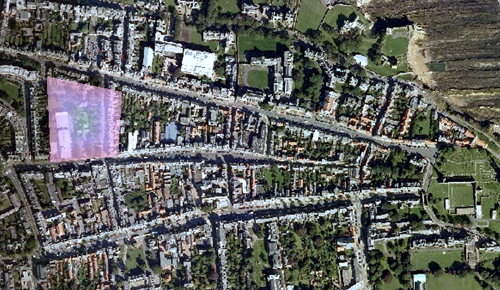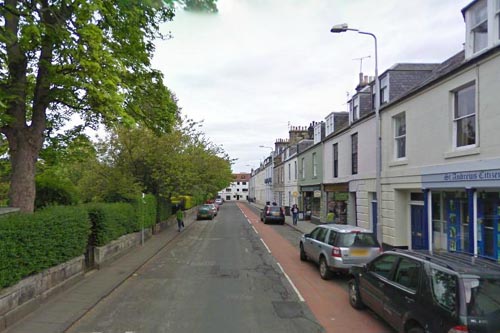THE discovery of the bodies of 15th century monks has been described as “unprecedented” by archaeologists.
The monastic cemetery was uncovered earlier this week by contractors undertaking roadworks in St Andrews, Fife.
Experts working on the site have been excited by the find, which they say helps pinpoint the location of a friary lost during the Reformation.
They say the remains are those of Franciscan monks who once lived in the area, and have described the find as “unique” due to its town centre location.
Map extract shows the friary (annotated Franciscanorum aedes – “Franciscan House”) as it appeared before the Reformation in 1560
Work has now been stopped at the Greyfriar’s Gardens site to allow the area to be excavated and the bodies preserved.
Fife council archaeologist Douglas Speirs, who has been trying to locate the monk’s burial ground for some time, has been excited by the find.
He said: “The general site of the friary has long been known but we have always wanted to pin it down and were hoping for a find like this.
“The graveyard would have been just for the friars, so I wouldn’t expect there to be more than 20, although we haven’t got access to all of it – we have found at least six sets of remains.
Six sets of remains, including these leg bones, have been uncovered
“They were Franciscan friars who were living and working in St Andrews, serving the spiritual needs of the people in the town.”
“St Andrews is a town of considerable antiquity so we always held the possibility of archaeological remains coming to light in that area as part of these works.
“However, we thought that because they were only reducing the surface by a small margin it wouldn’t be deep enough to disturb anything.
“Clearly we were wrong.”
Archaeologist Steve Liscoe added: “It is unprecedented to find a burial ground right in the middle of town.
“If you start digging around near some of these churches you will find something but this particular discovery is quite unique.”
An aerial view of the town shows where the friary was sited
Mr Speirs said the find was most likely part of a cemetery that belonged to a Franciscan order.
“A Franciscan friary is known to have existed somewhere near the vicinity and because of their order they weren’t buried in the local cemetery but had their own little one,” he said.
“The exact footprint of the friary is not known and previous archaeological works in the area have failed to locate it.
“However there can be little doubt that today’s discovery represents part of the cemetery of the friary of Observant Franciscans established in the town with the encouragement of Bishop Kennedy in 1458.
“The human remains exposed have now been recorded and excavated although development works on this part of the site has been stopped to allow for further investigations and recording works to be undertaken by Fife Council’s archaeological unit.”
Analysis of the skeletons will now take place to try and find out more about the people who were buried in the cemetery.
The bones were discovered as workmen dug up Greyfriar’s Gardens
Mr Spiers said tests would confirm whether or not the skeletons are monks.
He added: “I strongly suspect that radiocarbon dates will fall into the period 1458 to 1559 as we know from historical documentation that the friary was founded in 1458, completed in 1478 under Archbishop Graham and that it was an early casualty of the Reformation, being ransacked in 1559.”
William Speed, a general foreman for company undertaking the roadworks, was at the site when the discovery was made.
He said: “We had just lifted up part of the road when I noticed a couple of bones, and you could tell straight away what they were.”
“At first I wondered if they were human so we got in touch with the council and let them take over.”
The discovery is the latest of a number of historical finds in the town.
Last summer work in the town’s South Street uncovered some of the earliest remains of a medieval town house in Scotland, as well as a hoard of medieval pottery.





